20 Types of Boxwood Shrubs for Landscaping
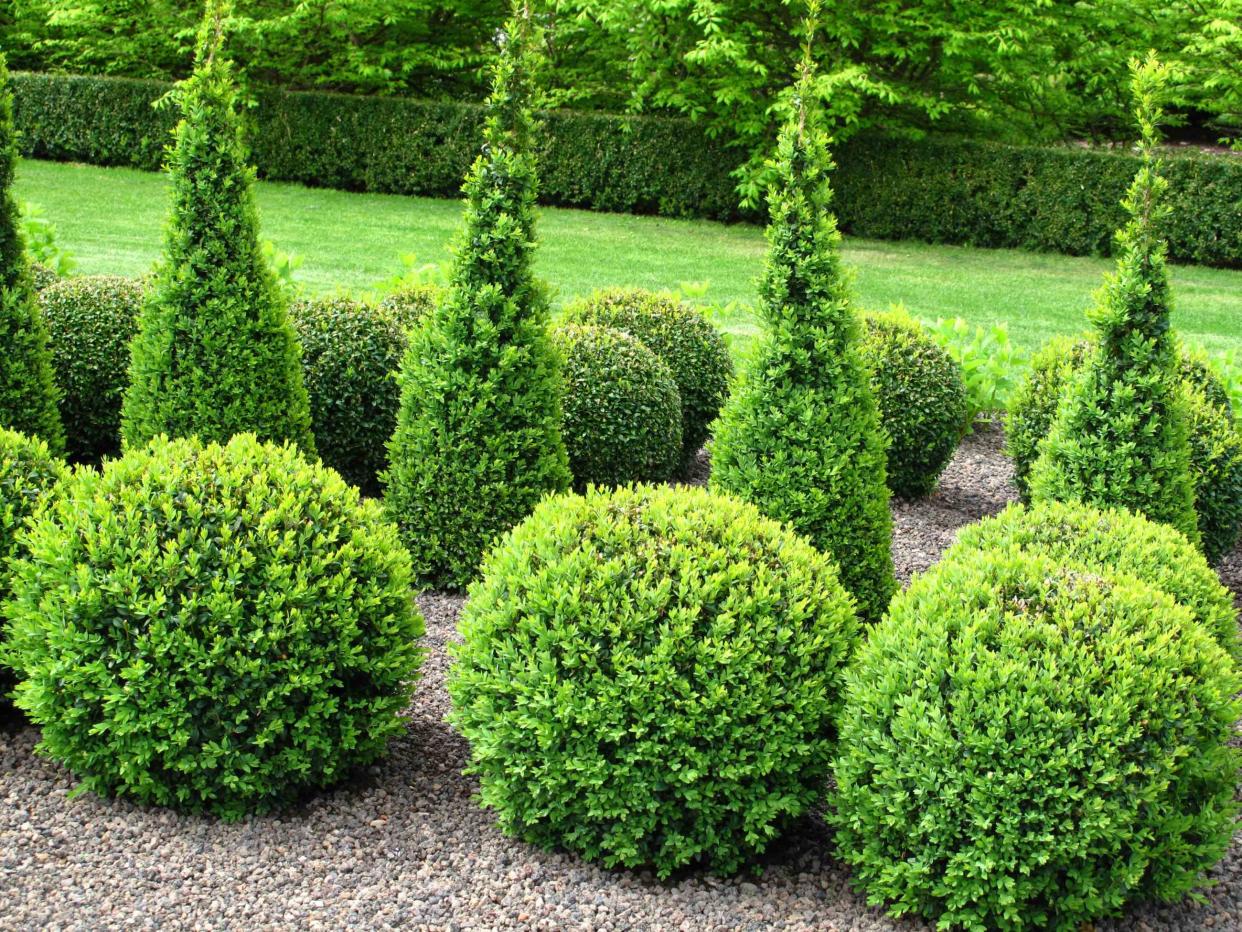
Reviewed by Kathleen Miller
Boxwood is an evergreen shrub with dense, broadleaf evergreen foliage that has been popular in landscaping since ancient times. There are over 100 types of boxwood plants, making this a versatile option for your landscape yard. Not only that, boxwood shrubs are low-maintenance, making care a breeze.
Here are 20 popular types of boxwood shrubs.
What Is a Boxwood?
A boxwood is a type of shrub that belongs to the Buxus genus. There are over 100 species, hybrids, and cultivars of boxwood, varying in characteristics such as height, shape, growth rate, leaf size, heat tolerance, cold tolerance, lighting preferences, resistance to pests and diseases, and salt tolerance.
How to Care for Boxwoods
Boxwood is easy to grow; just make sure you don't plant it too deeply. The shrub prefers evenly moist, well-drained soil, but it tolerates a soil pH ranging from mildly acidic to mildly alkaline too.
Since the bush responds well to pruning, the classic use of boxwood is in neatly trimmed hedges. But the smaller, slower-growing types also look great in containers.
Care Tip
Overwatering is a common problem when it comes to caring for boxwoods. Make sure you keep the soil evenly moist. Never have the soil be soggy or soaked.
Common Boxwood (Buxus sempervirens)
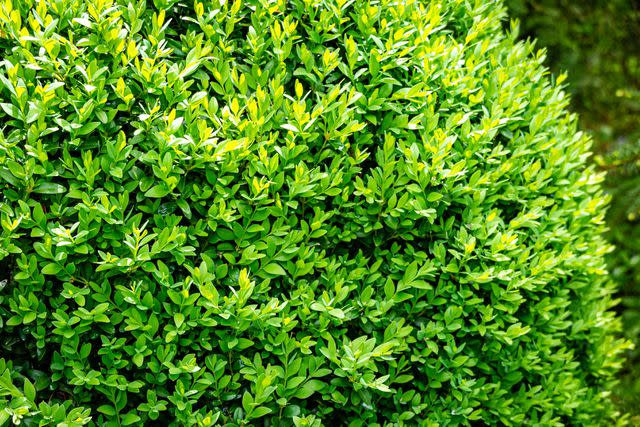
Marina Denisenko/Getty Images
Along with types of littleleaf boxwood and Korean boxwood, common boxwood is what you are most likely to see in people's landscapes (whether as a straight species or as a hybrid or cultivar).
Common boxwood has a slow growth rate. If kept trimmed, it has a rounded shape. It's average in terms of heat and cold tolerance. As a relatively tall-growing type, it is suitable for hedges where you need good height, such as for privacy. Keep in mind it will take time for common boxwood to reach your desired height, however.
Native Area: Western and southern Europe, western Asia, and northern Africa
USDA Growing Zones: 5 to 8
Height: 5 to 20 feet
Sun Exposure: Full sun to partial shade
Wintergreen Boxwood (Buxus sinica var. insularis 'Wintergreen')
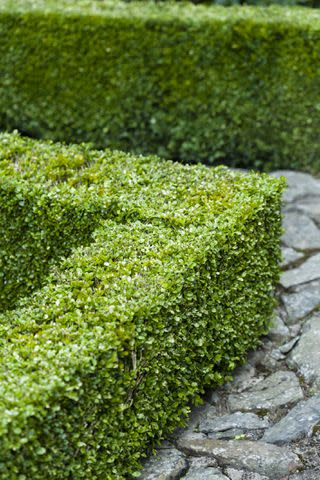
PaulMaguire/Getty Images
Korean boxwoods all develop a bronzy coloration in winter, but 'Wintergreen' takes that coloration to another level. It grows more quickly than other types of boxwood.
Native Area: Species native to Far East
USDA Growing Zones: 4 to 9
Height: 2 to 4 feet (with a slightly greater spread)
Sun Exposure: Full sun to partial sun
Japanese Boxwood (Buxus microphylla var. japonica)
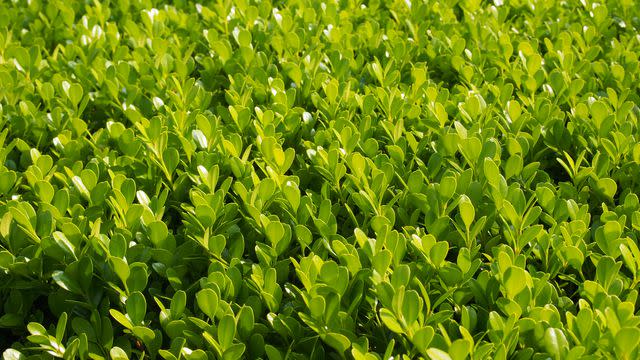
Eriko Tsukamoto/Getty Images
Japanese boxwood is a littleleaf boxwood with a slow growth rate. It is heat-tolerant, making it a good choice for the South. Its leaves may become bronzy in winter.
Native Area: Far East
USDA Growing Zones: 6 to 9
Height: 6 to 8.5 feet (with a greater width)
Sun Exposure: Partial sun to partial shade
Korean Boxwood (Buxus sinica)
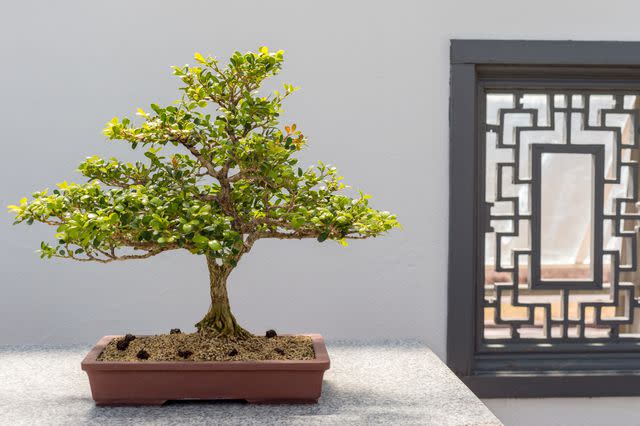
MarcBruxelle/Getty Images
Korean boxwood is similar to Japanese boxwood, though it has smaller leaves and tends to be smaller overall. The Korean boxwood is sometimes used to create bonsai. It has a slow growth rate, meaning you won't have to trim it much (great if you want a low-maintenance landscape).
Native Area: Far East
USDA Growing Zones: 4 to 9
Height: 2 to 10 feet (with a width twice that)
Sun Exposure: Full sun to partial sun
Dwarf Korean Boxwood (Buxus sinica var. insularis 'Nana')
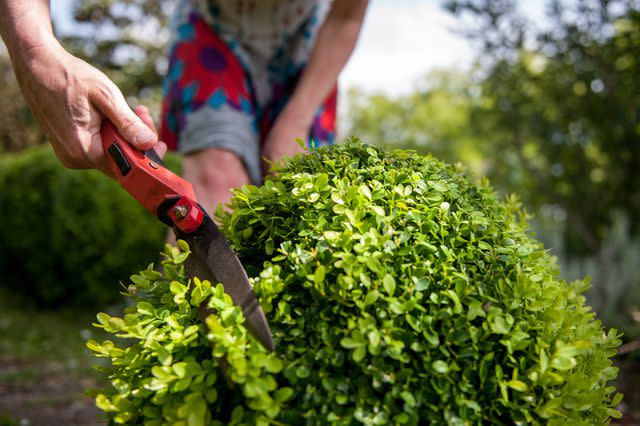
Lucy Lambriex/Getty Images
All shrubs of this variety exhibit extra cold hardiness. But there are also cultivars of this type that contain different features, meaning you have your choices. The 'Nana' cultivar is a dwarf.
Use it to make one of those small hedges popular as borders in formal landscape design. A nice feature of 'Nana' is its resistance to pests and diseases.
Native Area: Species native to the Far East
USDA Growing Zones: 5 to 8
Height: 1 to 2 feet
Sun Exposure: Partial sun to partial shade (full sun may scorch it)
Winter Gem Boxwood (Buxus sinica var. insularis ‘Winter Gem’)
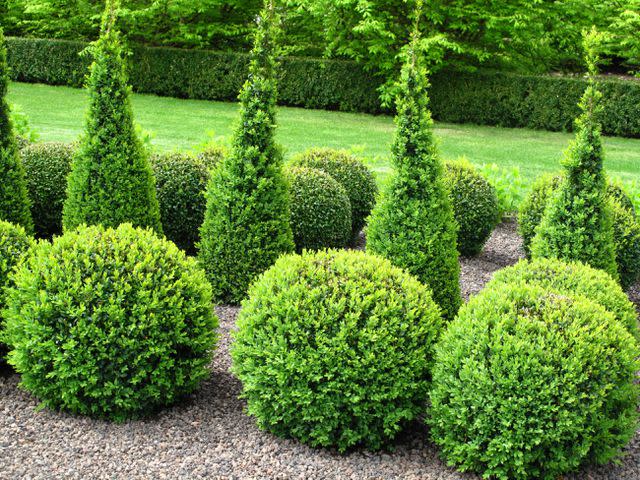
This rounded shrub is a slow grower, and it is perhaps best known for retaining its green color better during the winter. It also rates highly on pest resistance.
Native Area: Species native to Far East
USDA Growing Zones: 5 to 9
Height: 2 to 3 feet
Sun Exposure: Full sun to partial shade
English Boxwood (Buxus sempervirens 'Suffruticosa')
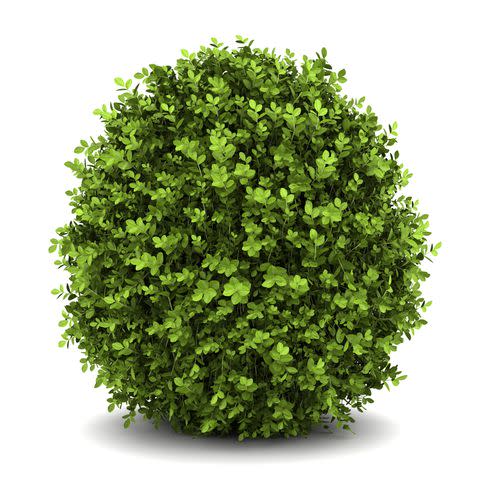
tiler84/Getty Images
This is a dwarf cultivar of common boxwood. It is a slow-growing, rounded shrub and very resistant to boxwood leaf miners, a major pest for boxwoods. Make sure to give it shelter from strong winds.
Native Area: Species native to western and southern Europe, western Asia, and northern Africa
USDA Growing Zones: 5 to 8
Height: 2 to 3 feet
Sun Exposure: Partial sun to partial shade
Variegated Boxwood (Buxus sempervirens 'Variegata')
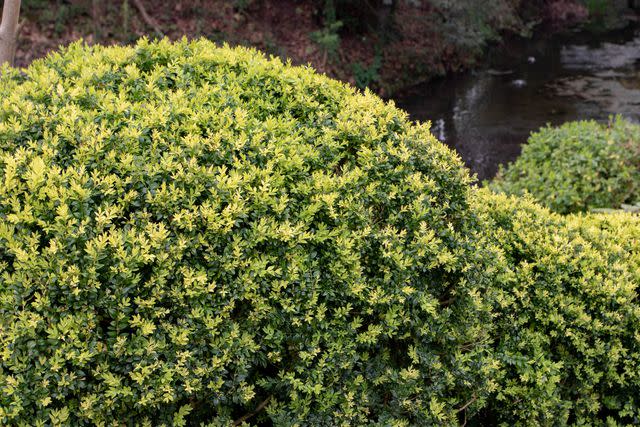
photohampster/Getty Images
This variegated cultivar of common boxwood is slow-growing with a rounded shape and leaf centers that are green. The margins start out white in spring and turn creamy in early summer, ending up light yellow.
Native Area: Species native to western and southern Europe, western Asia, and northern Africa
USDA Growing Zones: 6 to 8
Height: 3 to 5 feet
Sun Exposure: Full sun to partial shade
Golden-Edged Boxwood (Buxus sempervirens 'Aureomarginata')
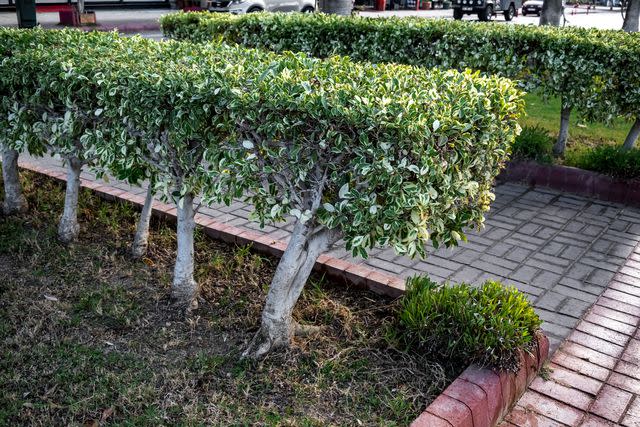
ioanna_alexa/Getty Images
The golden-edged boxwood has a slow growth rate and a rounded habit. Like other types of boxwood, boxwoods of this cultivar can be trained into "standards," exposing their trunks and making them look more like small trees than shrubs.
Native Area: Species native to western and southern Europe, western Asia, and northern Africa
USDA Growing Zones: 6 to 8
Height: 8 to 10 feet
Sun Exposure: Full sun to partial shade
Columnar Boxwoods
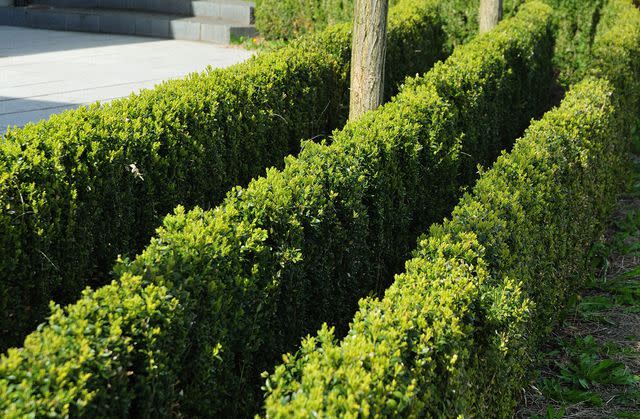
Carmen Hauser/Getty Images
A few cultivars of boxwoods grow with a columnar form. These include:
'Graham Blandy': 5 to 15 feet high x 1 to 4 feet wide; zones 5 to 9; partial sun; fairly slow grower
'Dee Runk': 8 feet tall x 2.5 feet wide; zones 6 to 8; full sun to partial shade; fast grower
'Fastigiata': 10 to 12 feet tall x 4 to 5 feet wide; zones 6 to 8; partial sun to partial shade; slow grower; bluish-green foliage
All look good at house corners in a foundation planting.
Native Area: Species native to western and southern Europe, western Asia, and northern Africa
USDA Growing Zones: Varies by cultivar
Height: Varies by cultivar
Sun Exposure: Varies by cultivar
Pyramidal Boxwood (Buxus sempervirens 'Pyramidalis')
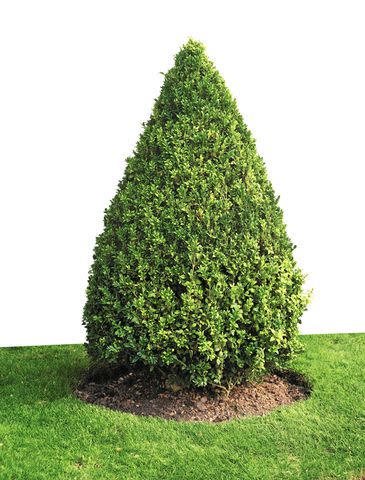
Max Labeille/Getty Images
Pyramidal boxwood naturally forms a cone shape, wider at the base and tapering to the top. It does not have to be trimmed to achieve this shape, making it a low-maintenance option. It has a slow growth rate and is a great choice for driveway entrances.
Native Area: Species native to western and southern Europe, western Asia, and northern Africa
USDA Growing Zones: 5 to 8
Height: 6 to 12 feet high, but only 2 to 3 feet wide
Sun Exposure: Full sun to partial sun
Green Velvet Boxwood (Buxus sinica var. insularis x B. sempervirens 'Green Velvet')
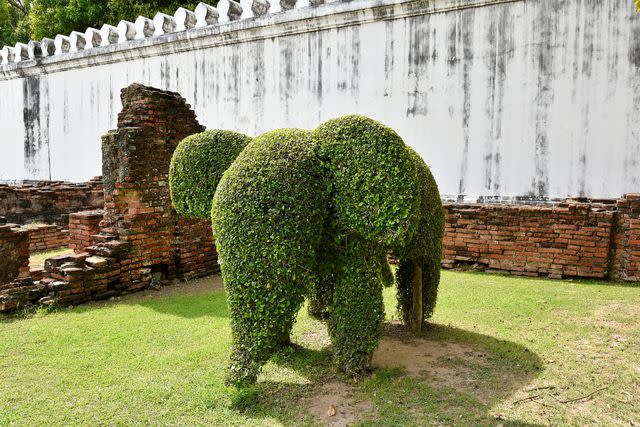
Vincent Jary/Getty Images
With its especially dense, velvety foliage, 'Green Velvet' is a popular choice for creating topiaries. This hybrid is round-shaped. and it holds up better than most to heat and humidity, so it's a good selection for gardeners in the South.
Native Area: Hybrid
USDA Growing Zones: 4 to 9
Height: 4 to 6 feet, with a spread slightly less than that
Sun Exposure: Full sun to partial sun
Green Mountain Boxwood (Buxus 'Green Mountain')

brytta/Getty Images
An easier boxwood topiary to create is the spiral form, and the slow-growing hybrid, Green Mountain boxwood is a popular choice for carving spirals because its foliage is dense and retains its dark-green color. It is also naturally upright.
Whereas people use frames to create elaborate topiaries, all you need to create a spiral is pruners and a wide ribbon to mark where you want your spiral to go.
Native Area: Hybrid
USDA Growing Zones: 5 to 9
Height: 5 feet at maturity
Sun Exposure: Full sun to partial shade
Sprinter Boxwood (Buxus microphylla 'Bulthouse')
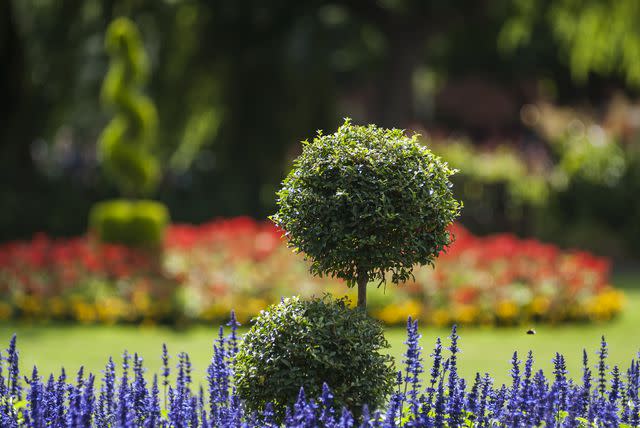
Kommercialize/Getty Images
An even easier topiary to make is a topiary ball. Turn your boxwood into a standard and display the resultant lollipop as a focal point in your landscape design. 'Sprinter' is a rounded shrub that has a fast growth rate. This is important for some people in creating topiaries.
Native Area: Species native to the Far East
USDA Growing Zones: 5 to 9
Height: 2 to 4 feet
Sun Exposure: Full sun to partial shade
Vardar Valley (Buxus sempervirens 'Vardar Valley')
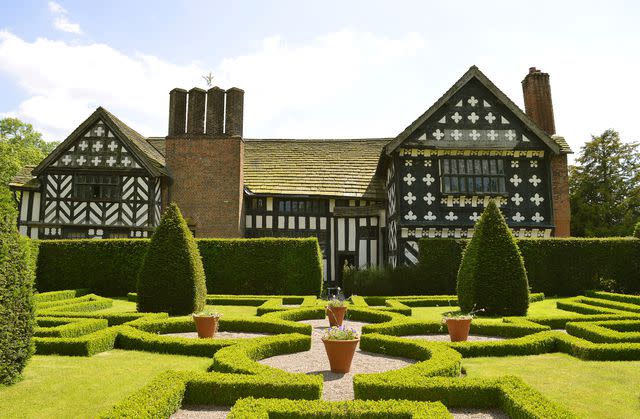
PeterEtchells/Getty Images
'Vardar Valley' is a strong selection for low hedges, such as those found in the "knot garden" (a formal garden laid out in an intricate design), growing twice as wide as it is long, with dense foliage. It is also disease resistant.
Native Area: Species native to Western and southern Europe, western Asia, and northern Africa
USDA Growing Zones: 5 to 8
Height: 2 to 3 feet
Sun Exposure: Full sun to partial shade
Bigleaf Boxwood (Buxus x 'Conrowe')
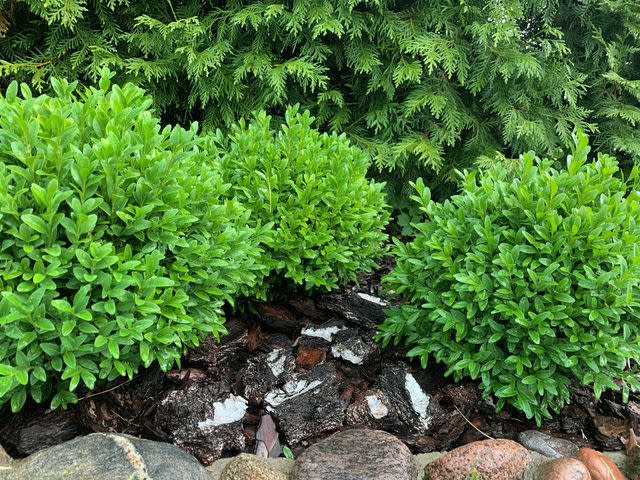
Nadya Tkach/Getty Images
Boxwood is generally known for having small leaves. If you enjoy creating textural contrast in the garden, juxtapose larger-leaved plants next to your boxwood. I you're not a fan of the tiny leaves on the typical boxwood, you may want to grow the bigleaf type instead.
Native Area: Hybrid
USDA Growing Zones: 5 to 8
Height: 4 feet
Sun Exposure: Full sun to partial shade
Tip
In landscape design, texture is visual, not something you can feel. Plants with smaller leaves are considered to have a fine texture; those with larger leaves a coarse texture. Placed together in the garden, the resulting contrast draws attention and creates interest.
Glencoe (Buxus 'Glencoe')
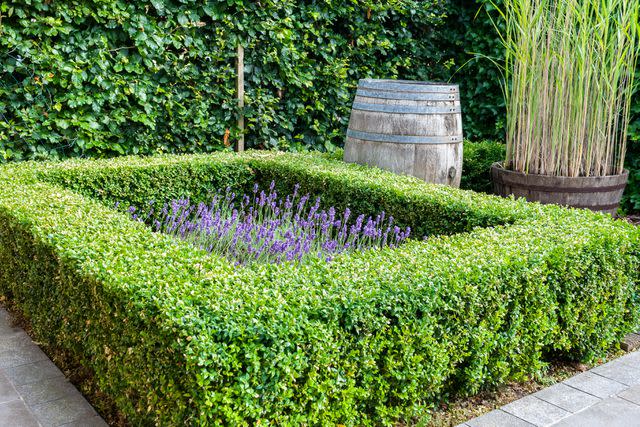
Havana1234/Getty Images
'Glencoe' is a hybrid boxwood known for retaining its green color better than most during the winter (although some protection is recommended). Another plus of this rounded shrub is its hardiness. These traits make it a good choice for Northern gardeners. A drawback is that it is more susceptible to boxwood blight than many others.
Native Area: Hybrid
USDA Growing Zones: 4 to 9
Height: 3 to 4 feet
Sun Exposure: Full sun to partial sun
Highlander Boxwood (Buxus sempervirens 'Highlander')
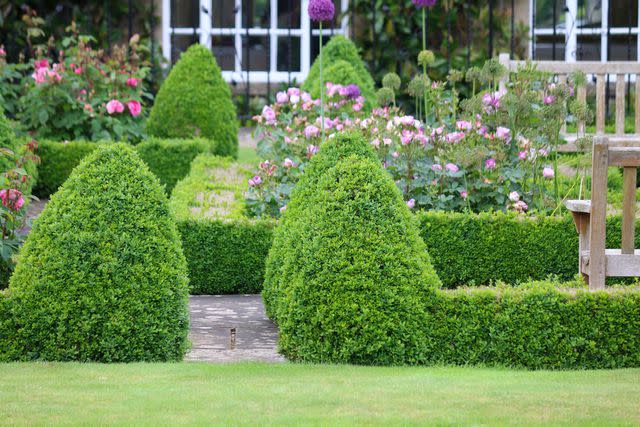
mtreasure/Getty Images
With its upright habit, good height, and fast growth rate, 'Highlander' is useful when you need a taller boxwood. Its fast growth rate is a tradeoff: Extra maintenance (trimming) in exchange for not having to wait so long for the finished product.
Native Area: Species native to western and southern Europe, western Asia, and northern Africa
USDA Growing Zones: 5 to 9
Height: 7 feet
Sun Exposure: Full sun to partial sun
Tree Boxwood (Buxus sempervirens 'Arborescens')
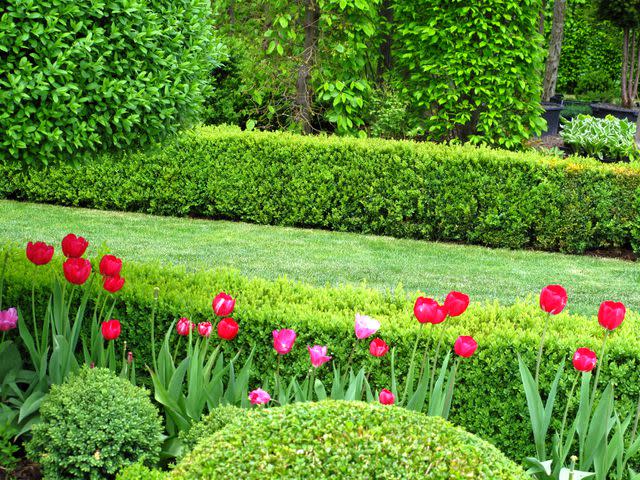
fotolinchen/Getty Images
Tree boxwood is taller than most, maturing to 15 feet, making it a great pick for evergreen privacy hedges. It has a slow growth rate (reducing maintenance) and an upright form.
Native Area: Species native to western and southern Europe, western Asia, and northern Africa
USDA Growing Zones: 5 to 8
Height: 8 to 15 feet
Sun Exposure: Full sun to partial shade
Littleleaf Boxwood (Buxus microphylla)
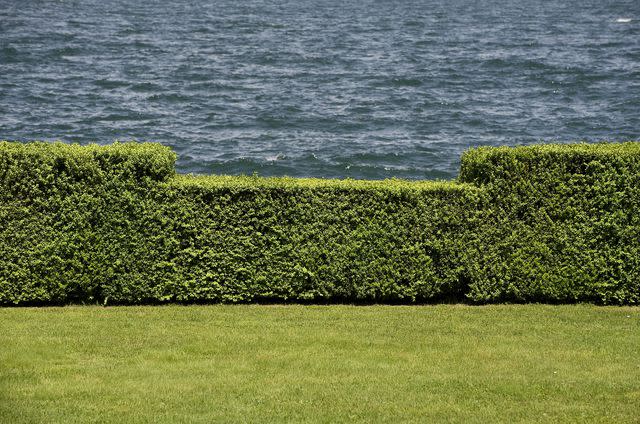
David Burton/Getty Images
Littleleaf boxwood is salt-tolerant, making this rounded shrub a good choice for those who live near the ocean.
Native Area: Far East
USDA Growing Zones: 6 to 9
Height: 3 to 4 feet
Sun Exposure: Full sun to partial shade
Frequently Asked Questions
How high maintenance are boxwoods?
Boxwoods are not considered to be high maintenance. Most boxwoods today have been bred to be compact, meaning they won't require much pruning and trimming, only as needed.
If I plant boxwoods, will they spread?
Certain types of boxwoods will spread, yes. But not all.
Is boxwood deer-resistant?
Yes. Deer avoid boxwood, making it an excellent choice for those with this concern. Common boxwood is one of the most deer-resistant shrubs around.
Read the original article on The Spruce.

